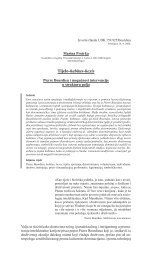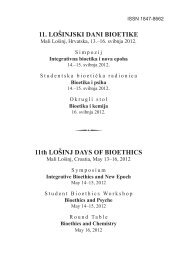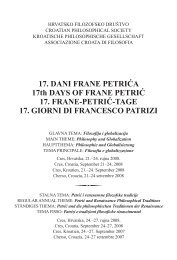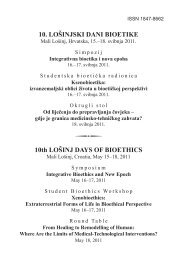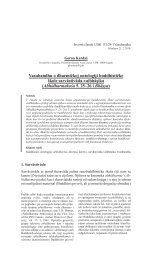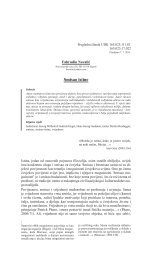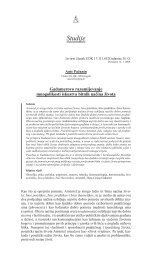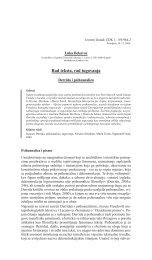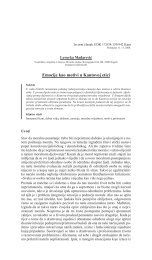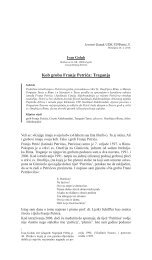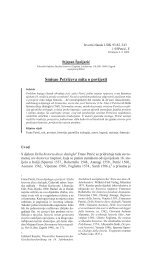Programska knjižica - Hrvatsko filozofsko društvo
Programska knjižica - Hrvatsko filozofsko društvo
Programska knjižica - Hrvatsko filozofsko društvo
You also want an ePaper? Increase the reach of your titles
YUMPU automatically turns print PDFs into web optimized ePapers that Google loves.
minje postojanje »nečega« između čestica tvari, što će se u kasnijem razvitku<br />
znanosti nazvati kemijskom vezom.<br />
Ključne riječi: Frane Petrić, Marko Antun de Dominis; platonička prirodna filozofija,<br />
peripatetička prirodna filozofija; fluid, toplina, gluten, kemijska veza<br />
SIMILARITIES AND DIFFERENCES BETWEEN PETRIĆ’S<br />
VIEWS OF THE STRUCTURE OF MATTER AND THOSE OF<br />
DE DOMINIS<br />
Frane Petrić and Marko Antun de Dominis belonged to two contrasted<br />
systems of natural philosophy, the former’s being that of Platonism and Neoplatonism,<br />
and the latter’s constructed within the frame of the Peripatetic. But<br />
on the structure of matter they expounded similar views.<br />
In his exposition on solid inorganic matters in Pancosmia (1591), Petrić<br />
states that they are composed of particles formed by contraction of Petrić’s<br />
fourth principle of fluid (fluor). The properties and diversities of the solid matters<br />
depend on the ratio of these particles to Petrić’s third principle of heat<br />
(calor). Thus every matter is determined by the relationship between fluid and<br />
heat. In doing so, the fluid in the liquid and solid matters appears in the form<br />
of indivisible particles. These particles are mutually bonded with the so-called<br />
glue (gluten). In the whole history of science Petrić’s gluten may be said to<br />
have represented the embryo of an idea of the existence of a chemical bond<br />
between the particles of matter. Today we know that a chemical bond is based<br />
on the principle of energy, whereas in the sixteenth century Petrić introduced<br />
gluten by means of the principle of heat.<br />
In his last published work, Euripus (1624), de Dominis does not use the<br />
terms atomos and corpuscula atoma, but speaks of particle (particula) and<br />
small globe (globula). He compares the form of the particle with a pea or lentil<br />
seed. Around the round particle in the centre of the world come the other earth<br />
particles, and then the water particles. Their roundness prevents them from<br />
adhering to each other, and although de Dominis makes no such conclusion, it<br />
follows that between them there remain small areas of void space. Therefore<br />
de Dominis’s view of the round particles of matter is contradictory to the Peripatetic<br />
doctrine on the nonexistence of void space.<br />
Although Frane Petrić was thirty-one years older than de Dominis, the<br />
views of the Cres philosopher on the structure of matter prove more innovative,<br />
because he is the first to mention the existence of »something« between<br />
174



